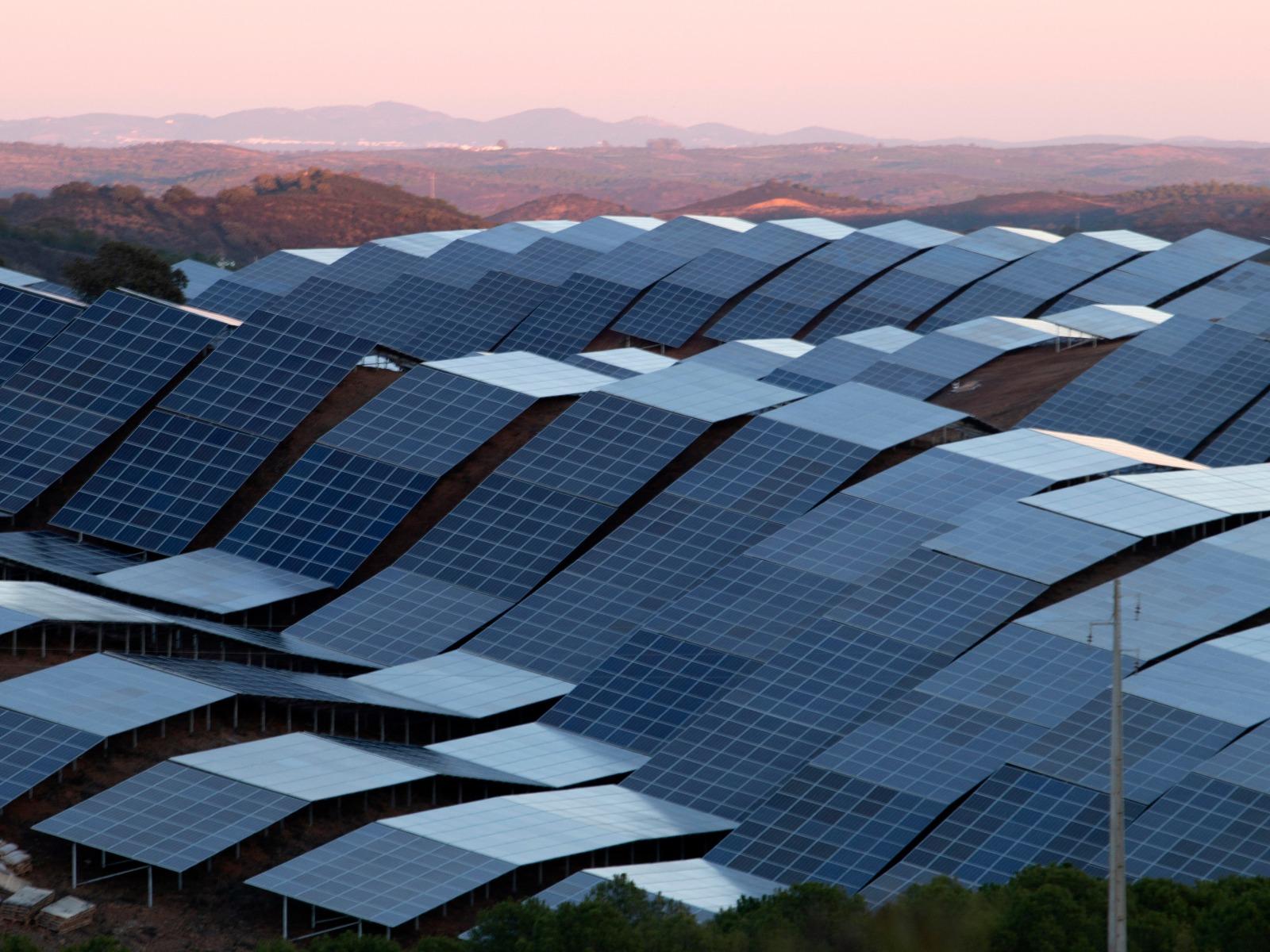For investors in climate technology ventures, the past two years have been a test of resolve and adaptability. A combination of geopolitical turmoil, sinking valuations, inflation and rising interest rates has set back private markets of all kinds. Total venture and private equity investment, for example, was down 50.2% year-over-year, reaching US$638 billion in 2023.1 Private market equity and grant funding in climate tech start-ups specifically has not fallen quite as far: 40.5% over the same time frame. But the drop still takes climate tech start-up funding back to the level of five years ago.
This decline has played out just as the need for innovative ways to mitigate, measure and adapt to climate change has become more urgent. The global rate of decarbonisation remains far too slow: recent PwC research finds that the world needs to decarbonise seven times as fast as the current rate to limit warming to 1.5°C above pre-industrial averages. Technology will play a critical role in bending the decarbonisation arc, but in the International Energy Agency’s (IEA’s) net-zero scenario, just over one-third of the emissions reductions occurring in 2050 depend on technologies that are currently only in development. Innovation capital, in much larger amounts than today’s sums, will therefore be vital for decades to come.
But there are also glimmers of hope. Climate tech’s share of private market equity and grant investment rose to 11.4% in Q3 2023 and is tracking at an annual rate of 10% for the year to date, extending a decade-long upward trajectory.2 First-time funders continue to join deals in large numbers. We’ve also observed some shifts in investment towards sectors with higher levels of emissions, particularly at the regional level, and towards technologies with more emissions-reduction potential. And beyond start-up investment, other, broader measures of climate-related spending look encouraging. The IEA projects that 2023 will see US$1.7 trillion go towards deploying renewables, grids and other clean-energy technologies—a new record high following six consecutive years of increases.
Could these trends continue in a way that helps the most promising climate tech concepts reach scale? To understand the possibilities, we expanded our analysis to a broader set of funding rounds across all stages of a start-up’s life cycle prior to exit, assessing global equity and grant investments worth more than US$490 billion over the past decade: 32,000-plus deals involving more than 8,000 climate start-ups. We also asked investors about the trends they’re seeing and their approaches to the market. Climate tech does require a broader base of support than venture investors alone can provide. Nevertheless, climate tech venture investors are still finding plenty of opportunities to deliver a positive impact, both for the climate and for financial returns, even in a constrained funding environment.
A funding shortfall for high-impact climate solutions
No matter how much innovation funding climate tech companies have raised in recent years, the same pattern has appeared: relatively little investment goes into those sectors that generate the biggest shares of global emissions. However, some positive rebalancing has taken place in the past 12 months.
The most notable change occurred in connection with industry, manufacturing and resource management (hereafter, industrials), which accounts for more emissions than any other sector of the economy (34%), according to the latest Intergovernmental Panel on Climate Change (IPCC) figures. Some industrial sub-sectors, such as cement and steel, present especially tough abatement challenges. This year, climate tech investors allocated a greater share of funds to start-ups targeting emissions from industrials. Whereas investors directed just under 8% of start-up funding to industrials between Q1 2013 and Q3 2022, they invested 14% in the sector between Q4 2022 and Q3 2023.
Other sectors still exhibit a sizable shortfall in start-up funding relative to their share of emissions. A small—and decreasing—share of investment went into climate tech start-ups focusing on high-emissions sectors such as the built environment (17% of emissions, 5% of start-up investment) and food, agriculture, and land use (22% of emissions, 8% of start-up investment).
But when looking at funding relative to technologies’ emissions reduction potential (ERP), we find a trend of increasing alignment. As recently as five years ago, the disconnect between funding and ERP was more pronounced, with lower-ERP technologies such as light-duty battery EVs and micromobility taking bigger shares of funding than they have recently. Solar and wind start-ups are also taking up a smaller share of investment than in earlier years (in 2013 and 2015, in particular), when they received around one-third of all innovation funding for climate solutions. This fall in their share of investment reflects the maturation of these technologies and the markets for them, as well as investor openness to other climate technology solutions. Now, we see investors putting more capital into start-ups that work on higher-ERP technologies such as carbon capture, utilisation and storage (CCUS); green hydrogen; and alternative foods.
To meet climate targets, even more investment must flow to technology solutions for hard-to-abate sectors such as industrials and power, as these technologies will move the dial more on global emissions. Why isn’t this happening now?
One reason is that certain sectors may require less innovation funding to achieve emissions reductions because effective technologies already exist. So when it comes to decarbonisation in those sectors, the biggest funding requirement isn’t more equity investment to spur innovation. Rather, companies and infrastructure owners will need capital to pay for a huge increase in technology deployment: renewable generation, power grids, energy storage and so on. Capital of this sort normally comes from banks, governments and other providers, not the venture capital (VC) firms and other private capital sources that are the focus of this report.
In interviews, investors also highlighted their interest in delivering financial returns and emissions reductions within a reasonable time horizon—and described the challenges of producing certain technologies profitably at scale over that same time frame. ‘We look at two axes,’ said Yair Reem, a partner at Extantia Capital, ‘not just the magnitude of the technology’s potential impact on climate change, but also the time to impact.’
For this, noted Hampus Jakobsson, a general partner at VC fund Pale Blue Dot, it’s also helpful to consider ‘how the science can be turned into engineering that can be used by customers, how to convince those customers that it will work with their existing systems and how to get the costs to an acceptable level for all parties.’ For some sectors—notably industrials, where new technologies must integrate with legacy assets, or food, agriculture and land use, which differs significantly from region to region—this can make it hard for start-ups to scale internationally and achieve strong exit multiples.
New regional variations
The North American market—largely driven by the US—has long been the focus of climate tech investment. In 2022, falling levels of investment in that region accounted for much of the global decline. This year, investment in North America has continued to drop. In other regions, investment has also tailed off but is nevertheless on track to end the year at a higher level than in 2019, the last year prior to the boom of 2020–21.
Looking at the four regions where climate tech investors deploy the most start-up funding, it becomes apparent that investors have begun looking to new sectors for opportunities. Until recently, the mobility sector had been a clear focus, receiving 51% of investment from Q1 2013 to Q3 2022. Now, investment in both North America (largely the US) and China has shifted away from mobility-related start-ups and towards other sectors. In North America, mobility’s share of climate tech start-up funding fell from 59% in 2018 to just 24.4% in 2023 (through Q3). Our expanded analysis of emerging markets also shows that China has seen a smaller but no less significant decline in start-up funding for mobility, from 94% of climate tech investment in 2018 to 71.5% this year.
These decreases explain much of the global shift in start-up funding away from mobility and towards more emissions-intensive sectors, though the trend hasn’t been universal. Excluding China, the rest of the Asia-Pacific region has seen a relative rise in mobility investments in the past two years.
In contrast, industrials—the sector with the highest emissions levels—has experienced a relative increase in investment. The sector’s share of start-up investment in North America almost doubled from 2022 to 2023, going from 9% of investment to 16%. Investors cited the grants, incentives and other funding options available under policies such as the US Inflation Reduction Act as one reason climate tech investments in North America have swung away from mobility and towards industry.
Meanwhile, all regions have seen greater investment in energy-related climate tech. The shift in China—where energy-related tech rose from just under 2% of start-up investment in 2018 to 22.2% in 2023—was especially noteworthy.
Fewer early-stage deals, but a steady inflow of first-time investors
There is a further cause for concern, one that’s related to early-stage deals—but also, potentially, an encouraging pattern of fresh activity from first-time investors. First, the concern: an ongoing slowdown in early-stage dealmaking, which we initially observed last year, could give fewer start-ups a chance to succeed. Down the line, this development could curb the supply of viable climate tech solutions.
However things play out, it’s clear that investors have shifted away from early-stage deals in the past several years, including during the 2020–21 boom. Early-stage deals made up more than two-thirds of all climate tech deals in 2018 and 2019. So far in 2023, their share has dropped to less than half. The balance of dealmaking activity has shifted instead towards mid-stage deals, and the proportion of late-stage deals has remained relatively flat.
The investors we spoke with cited two main reasons for the relative decrease in early-stage deals. One is investor judgment. ‘We see too many things that are interesting and have a lot of potential,’ said Extantia’s Reem, ‘but they are not investable.’ Robert Schultz, a partner at Capricorn Investment Group, agreed: ‘Sometimes we’ll say, “This technology is unbelievable, but it’s going to be hard for us to invest in it because they won’t be able to scale it.”’
The second reason mentioned is the reluctance of start-up founders and leaders to raise funds in a weakened market. ‘Our assumption is that most companies that can avoid raising external funding now are choosing to do so because they don’t want to take the hit to their valuation,’ said Henry Philipson, a director at VC firm Beringea and a founder of industry group ESG_VC. (The worry is that the investors who join mid-stage funding rounds will value a company less highly than its valuation from previous rounds, thus diminishing the worth of existing shareholders’ stakes.) ‘So they’ll do internal rounds, bridge-funding rounds, or something else to extend their runway.’
Although early-stage deals may be losing a measure of appeal to investors, there’s a sign that climate tech as a whole remains attractive: a steady inflow of first-time funders. Compared with the average number of new climate tech investors per quarter (that is, those making their first climate tech deal) over the past decade, the number of new investors per quarter in 2023 has held relatively steady, and was proportionately down far less than the overall investment market.
In interviews, experienced climate tech investors said they welcome the newcomers. ‘Even though our biggest edge used to be that we were a dedicated climate tech investor,’ said Pale Blue Dot’s Jakobsson, ‘it’s great that now there are way more funds.’ Schultz noted a shift in attitudes: ‘Traditional LP [limited partner] investors that are driven 100% by returns are starting to see that by investing to impact the climate, they can often generate better returns.’
How climate tech investors approach the changing market
As we’ve seen, the volume of climate tech investing has gone down. Yet the sector still holds evident appeal to investors. And the need for climate solutions is greater than ever. These dynamics, experienced investors say, make for a challenging market—and a potentially rewarding one for companies that exercise good judgment and discipline. Here are a few investor ideas for how to approach climate tech VC today.
Think outside the buzz
Although interviewees agree that policy can encourage businesses to mount a more robust response to climate change, they were quick to point out that climate tech start-ups still need to be fundamentally sound. Said Extantia’s Reem: ‘We need to have pressure from politicians, as well as demand from the corporate level and from consumers. But if a climate tech company can’t make money, then it’s not going to scale and it’s not going to have an impact.’ And Capricorn’s Schultz cautioned against overreliance on subsidies: ‘A business model predicated on getting money from the government isn’t a business model.’
‘The way we look at climate tech at the moment, because it’s so buzzy and trend-driven, [is] we focus much more on the fundamentals of building good companies,’ said Beringea’s Philipson. ‘We look for robust businesses that can feasibly get to profitability off our round of investment.’
Make countercyclical moves
Some investors see the current dip as a needed recovery from the headier times of 2020–21. ‘We had two years where if you did a climate tech start-up, people just gave you cash,’ said Jakobsson. ‘Now the market is starting to work—you’re not raising just because you’re a climate start-up, you’re raising as a start-up.’
That translates to more opportunity for savvy investors. ‘Valuations have definitely come down, so we think it’s a good buyer’s market,’ said Christian Hernandez Gallardo, co-founder and partner at VC firm 2150. Schultz agreed: ‘It’s better for the investment community to find really robust opportunities.’
However, the relative scarcity of venture funding can also complicate dealmaking in certain ways. One challenge for investors, observed Hernandez, may be convincing target companies to adjust to the new environment: ‘Some founders have yet to reset their expectations to what the market actually holds.’
Plan for the growth phase
Building a good climate tech company requires more than hatching an innovative idea. It also requires the capital to grow. ‘From the standpoint of an investor, the deal thesis isn’t necessarily just about the technology risk. It’s also about the level of funding required to scale up a business,’ Philipson noted. ‘A lot of the verticals within climate tech would require quite a lot of funding to get to scale, whether to build factories or to construct wider infrastructure.’
This level of investment—more than US$1 trillion for clean energy in 2023, for example, according to the IEA—tends to be far beyond the capacity of VC and private equity funds. Noted Hernandez, ‘We need to mitigate 25 gigatons of CO2 by 2030. That’s not going to happen from a small venture portfolio. We need massive amounts of capital deployed. Not only venture and private equity, but growth.’ It is therefore important for start-up founders to explore all possible sources of capital, such as government loan and incentive programmes, beyond their initial venture investors.
The need for climate tech innovation, especially in high-emissions sectors, makes venture-stage funding crucial to the fight against climate change. But if climate tech is to deliver significant impact, it will take much more financing than is currently flowing into the category: not just venture capital, but also growth capital to help start-ups expand quickly and financing to help companies and governments deploy climate tech solutions en masse. Crucial, too, are shifts in policy and standards, and greater cooperation among organisations of all sizes and sectors. The more value the world places on climate action, the more opportunity there will be for investors who are at the frontier of innovation.
Footnotes
[1] Total start-up investment was measured from Q4 2022 through Q3 2023 and then compared to the preceding 12-month period: Q4 2021 through Q3 2022.
[2] This year’s report analyses an expanded set of investment flows across private equity and venture capital. It tracks more than twice as many start-ups as last year’s report, with more coverage of later-stage funding and emerging markets, including increased coverage of China. As a result of the change in methodology, the data in this report is not directly comparable with previous reports, and so we have calculated new historical series data to analyse trends. Nevertheless, the new data indicate a similar trend to that shown using last year’s methodology: climate tech represents a growing share of the venture investment market.
Methodology
Sustainability at PwC
Our passionate community of solvers uses real-world experience to turn theory into action—achieving meaningful change and measurable value.
The energy transition
Fuelling a resilient future through powerful alliances, greener investment and greater use of renewables.
Contact us

Partner, Global Sustainability Leader, PwC United Kingdom
Tel: +44 (0)7710 157908


Senior Manager, Sustainability and Climate Change, PwC United Kingdom
Tel: +44 (0)7753 461500
Contact us

Partner, Global Sustainability Leader, PwC United Kingdom
Tel: +44 (0)7710 157908


Senior Manager, Sustainability and Climate Change, PwC United Kingdom
Tel: +44 (0)7753 461500















